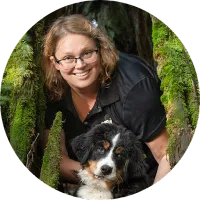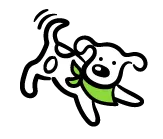
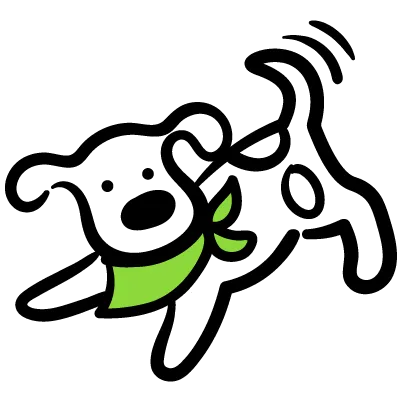
About Us
Since 2011, we’ve combined formal education in psychology, veterinary care, and canine cognition to provide exceptional training.
As an SPCA Accredited AnimalKind organization, we rely on the latest research, while ensuring that our work is rooted in 15,000 years of human-dog connection.
Dogs and humans have evolved together for 20,000 years. They have found food for us, and protected our families and livestock. They have gone to war with us and acted as gentle playmates for our children. They have laid down their lives to save us.
Our lifestyles have changed a lot in the last century, but our need for dogs hasn't. A dog and their owner, when reunited, sync their heart rates within minutes. Just owning a dog decreases heart attack mortality by 30%.
We are designed to live with dogs, but we need to learn how to incorporate them into our chaotic modern lives.
We're here to help your dog become a helpful and contributing member of your modern family.
Forget sit and stay!
At Wag The Dog we can teach dogs to:
Find our phones and keys when we lose them.
Find our children when we lose them!
Put recycling in the blue bin.
Fetch their own leash for walks.
Comfort us when we are sad or stressed.
Close doors and cupboards.
Imitate our actions.
Communicate their needs and thoughts clearly.
Recognize fragile people like children and the elderly and be cautious around them.
Assist us with our disabilities
Accompany us on outings to stores and markets.
Trust us to return home to them when we go out.
Understand simple phrases and two step instructions.
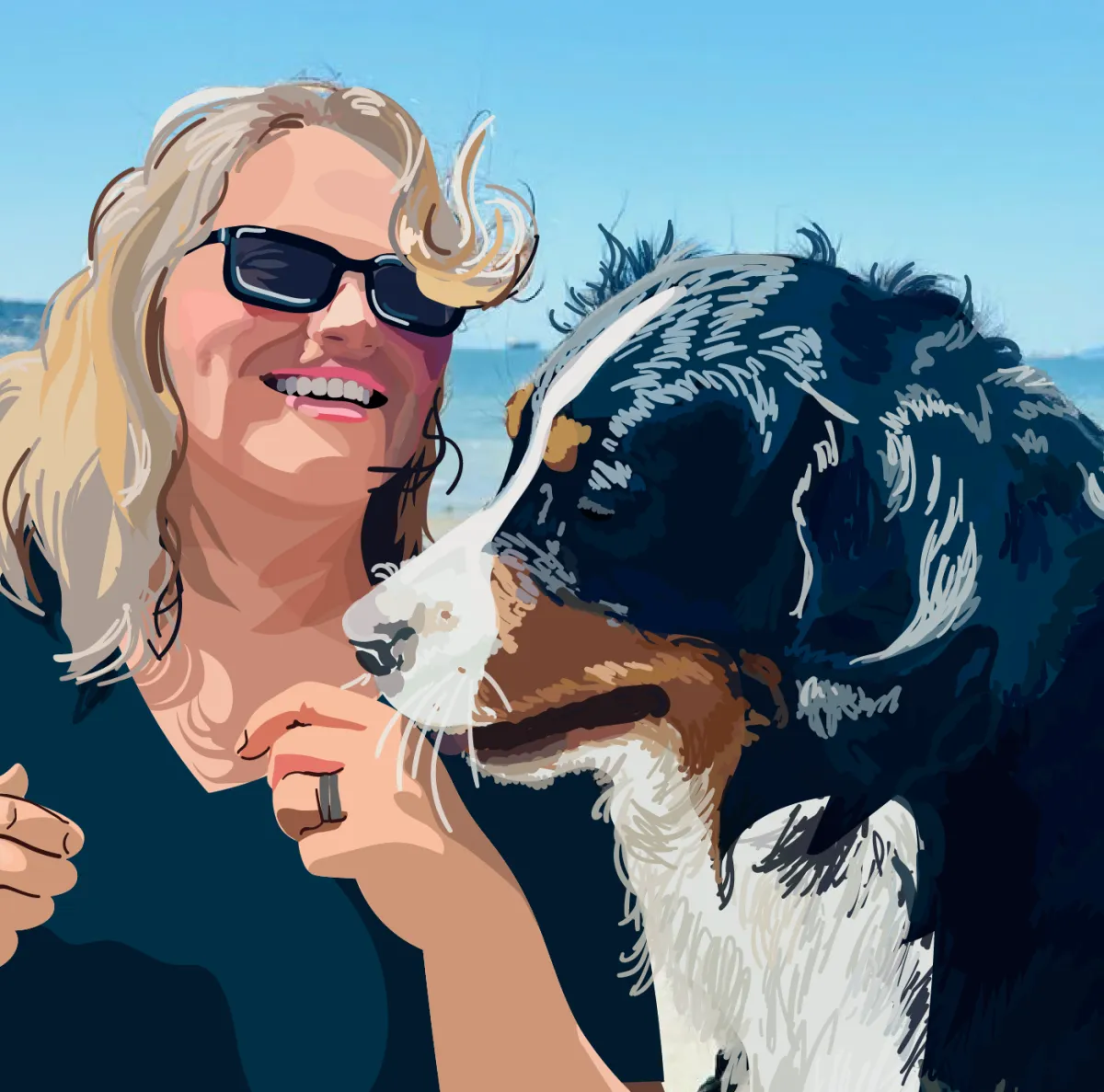
Carol Millman (she/her)
- Lower Mainland
B.Sc, Psychology, Veterinary Technologist, Certified Pet Dog Trainer - Knowledge Assessed (2022), Certified Trick Dog Instructor
Carol lives in Port Coquitlam and works in the Lower Mainland. Her autism gives her a unique perspective which she brings to her work with both dogs and people. Her time working as a veterinary nurse culminated in becoming the Director of Medical Services at a holistic veterinary clinic.
In 2008, Carol was hired as an apprentice Advanced Instructor at Pacific Assistance Dogs Society (PADS). She trained and placed wheelchair assistance dogs, hearing dogs for the Deaf, and facility therapy dogs. She also ran puppy classes and assisted in the daily care of the dogs in training.
PADS still sends people Carol's way when they are looking for private service dog training.

- Currently On Leave -
Amelia Kellum (she/her) - Fraser Valley
B.Sc Canine Studies, Certified Professional Dog Trainer Knowledge/Skills Assessed (2022), Certified Trick Dog Instructor.
Amelia is a certified professional dog trainer with nearly two decades of experience training dogs - including hunting, acting, and assistance dogs such as hearing, therapy, guide, and mobility dogs.
Amelia has learned directly from Bonnie Bergin, pioneer of the disability assistance dog, and is also a graduate of the Ben Kersen and the Wonderdogs professional trainer's program.
She apprenticed at PADS as an instructor and has been training independently since 2010. She now lives in Hope with her family.
What can you achieve
with our help?
Come check out our blog!

How To Walk Your Puppy
Stop And Smell The Flowers - How To Walk Your Puppy
Everyone knows that dog owners are expected to take their dog on a walk a couple of times a day.
It sounds fine in theory... until they try to get their ten week old puppy to leave the yard. Then their vet tells them not to take the puppy anywhere because it isn't vaccinated... but the dog trainer says to socialize it...
Cue screaming.
Yes, You Should Walk Your Puppy
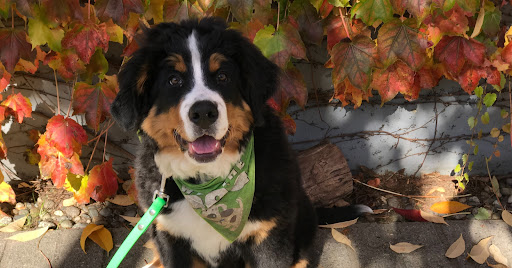
First of all, yes, definitely take your puppy out for walks.
The first four months of a dogs' life are vital for socialization. If you wait until your puppy is fully vaccinated, it will be too late. The American Veterinary Society of Animal Behavior has released a position statement strongly in favour of socialization.
Incomplete or improper socialization during this important time can increase the risk of behavioral problems later in life including fear, avoidance, and/or aggression.
Behavioral problems are the greatest threat to the owner-dog bond. In fact, behavioral problems are the number one cause of relinquishment to shelters.
Behavioral issues, not infectious diseases, are the number one cause of death for dogs under three years of age.
--© 2008 AVSAB American Veterinary Society of Animal Behavior
Note:
It is still very important that your puppy sees a vet regularly through puppyhood and receives their monthly booster vaccines!
Puppy Walks Are Not Exercise
If you're used to getting 10k in before breakfast, it's time to kiss that routine goodbye for a while. In fact, if you're hoping to go around the block before breakfast you might be aiming too high.
Because your puppy is learning about the world, walks need to be taken slowly. Your puppy may be unwilling to even leave your front step before they've had a chance to sniff the air, and look around, and mentally adjust to the world.
Then your puppy will want to stop to check out everything. We mean EVERYTHING. A twig! A bird! A smell! And after every one of these your pup may need to sit down and THINK about what they just experienced.
Be patient. Your puppy is not thinking about toileting right now, or about getting in their daily cardio. Your puppy is creating a mental database of All The Things. Sometimes they get stuck on the loading screen, and that's okay.
Beware The Opposition Reflex
The "opposition reflex" is a term coined by Pavlov, which basically means "dogs try to escape when they're trapped."
Now understand that when your leash tugs at your dog's harness or collar, your dog feels trapped.
Now understand that until you relax that leash, you're not going anywhere.
As far as we know, Pavlov didn't give a name to the human need to turn leashes in marionnette strings, but let's call it the Puppet Reflex.
Stop Puppeteering Your Puppy!
That leash is a safety line to ensure your puppy doesn't wander into the road or down the maw of a roaming cougar. That's it.
Every time you try to use the leash to guide the movement of your dog, you're making them balk, and pull against you. This can become a habit that is incredibly hard to break.
You're also setting a really bad example. How can you teach your dog not to pull on the leash, when you can't even stop doing it?
I mean, we can land a man on the moon, but we can't model good leash manners for a puppy?
We're In This Together
When you're tied to a dog, and the dog is tied to you, you must now engage in a team sport.
You're the team leader. You're older, your brain is bigger, and you have a GPS on your phone. You should be the one leading the way.
But ultimately this is also a six legged race. Neither of you can move without the permission of the other, unless you drag each other which you do not want to do.
Instead, stand there and wait. Wait for your puppy to thoroughly investigate the area within the boundary of the leash. Wait for your puppy to process everything and feel ready to move on. Wait for your puppy to realize they are tied to you. Wait for them to look up.
When your puppy looks up, get very excited, praise them and rush forward a few steps, encouraging puppy to follow you. You can use treats, peanut butter on a touch stick, a toy, anything to make moving with you - engaging with you - fun. As soon as puppy looks away from you and starts tugging toward a bush, stop again.
Repeat.
You may not get far today, or tomorrow, or the next day. But when you do get somewhere, you'll get there together, and you'll move together for the rest of your dog's life.

We work on land which was taken from the nations who had lived here for thousands of years. They are still here and they are still waiting patiently for us to stop being jerks about it.
© 2024 Copyright Wag The Dog Training
All Rights Reserved


